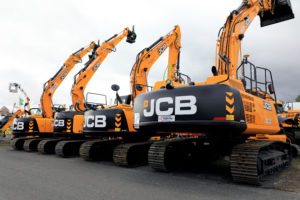Located at the heart of Queensland’s east coast, the Port of Brisbane is the third largest port in Australia and home to the country’s fastest-growing container port. The port has long played a valuable role across Australia in delivering vital cargo and cruise operations that continue to enhance the local Brisbane economy, whilst enhancing Australia’s place as a key stopping point for international vessels. Across every operation conducted at the port, the Port of Brisbane is striving to be Australia’s premier port and a key logistics hub focused on the future of the country’s cargo and tourism market.
The Port of Brisbane has spent over 40 years transforming Australia’s cargo industry through its world-class deep-water facilities. The port origins stem from the river port formed on the lower reaches of the Brisbane River on the Fisherman Islands. The port’s first exports were timber shipments which were rafted down the river and across Moreton Bay to Dunwich, before being taken by sailing ships headed for Sydney. Today, the port spans 28 operational berths covering more than 8,000 meters of quay lines and is managed by the Port of Brisbane Pty Ltd (PBPL) under a 99-year lease from the Queensland Government. PBPL is responsible for overseeing the port’s maintenance, development, land leasing and related facilities to keep maritime operations running smoothly and serving Brisbane every day.
PBPL is owned by the APH Consortium which comprises 4 of the largest and most experienced infrastructure investors in the world. These include Caisse de dépôt et placement du Québec, IFM Investors, QIC Private Capital Pty Ltd on behalf of its managed funds, and Tawreed Investments Ltd, a wholly owned subsidiary of the Abu Dhabi Investment Authority. Therefore, PBPL’s operations are supported by a network of experts spanning infrastructure developments. Across the Port, PBPL oversees the various container terminals and wharves, which are responsible for maintaining the general cargo, dry bulk cargo and wet bulk cargo arriving and leaving through the Port of Brisbane. In addition to this, the PBPL provides essential vessel services spanning navigation and pilotage, as well as providing port tariffs and shipping permits to vessels arriving in the Port of Brisbane.
One of the most vital aspects of the port today is the Brisbane Multimodal Terminal (BMT) which provides dedicated and tailored logistics services across the terminal. BMT is crucially located close to the rail, road and Port of Brisbane, so it is in a primed position to serve the incoming cargo needs and keep it moving throughout the integrated transport network available to it. Connecting rail, shipping and container terminals with a tailored interface, helps the Port oversee and monitor the freight containers in a more innovative way for seamless handling across the entire port and onto end markets.
An exciting development for the Port over the last 3 years is the Brisbane International Cruise Terminal, which opens in June 2022. The cruise terminal was a much-needed expansion to the port, as for many years larger cruise ships arriving at the Port of Brisbane were forced to dock in one of the cargo terminals as they were unable to turn around any further upstream. Therefore, the opening of the Brisbane International Cruise Terminal met this growing need for a larger dedicated cruise terminal and ensured that vessels could continue to arrive at the port. A report from the Port of Brisbane outlines that it expects that cruising operations from Brisbane could contribute around $1.15 billion to the Queensland economy. The project was approved by the State Government under a market-led proposal framework in 2017 and is set to transform the cruising industry of Brisbane.
In January, the Port of Brisbane announced that the Brisbane International Cruise Terminal had reached 2 million passenger movements following the arrival of its 346th cruise ship to the terminal. This highlights the growing industry that the Port is now able to play a key role in, and shows how the Port and government investment into the industry has proved a valuable endeavour for the region. Neil Stephens, Chief Executive Officer at the Port of Brisbane, highlighted that “Over the last 12 months, we’ve continued investing to enhance the cruise terminal – expanding onsite car parking, adding more shade to outdoor seating areas, and increasing taxi rank capacity”. Stephens continues, “Every time a vessel calls in Brisbane it contributes around $1 million to the state’s economy, with many of these ships visiting other Queensland ports, supporting valuable opportunities for regional communities”.
Neil Stephens’ comments highlight the value that the cruise industry provides for Brisbane, adding around $1 million with each vessel call, which helps support the local community. Stephens also outlined that over the coming season, the port expects 150 cruise calls from 13 different cruise lines between October 2024 and September 2025. With a fruitful season ahead, the Brisbane International Cruise Terminal will continue to be a vital operation under the Port that enhances the local community and brings vital economic development to the region.
As the port moves towards the future, it has a set of expansion and development plans in place to help enhance its operations and bring greater sustainability to the port. The Future Port Expansion (FPE) project will see new land and an increased quay line added to the port through the reclamation of land to grow the port’s capacity to 224 hectares. One completed FPE would see the port surrounded by a geotechnically engineered seawall, divided into several paddocks. Another key development is NCOS (Nonlinear Channel Optimization Simulator System) Online. NCOS Online is a world-leading software that provides a detailed forecast of a vessel’s under-keel clearance and environmental condition through a web interface. This will help PBPL and key stakeholders to maximise their cargo and sailing windows while maintaining optimal safety.
However, one of the most exciting current developments is the implementation of an embedded energy network across the Port West Industrial Estate. The project aims to deliver the Port West Industrial Estate into an embedded network where 100% of the energy supply to customers comes from 100% renewable power. This aims to be achieved through a 1MegaWatt (MW) rooftop solar panel system for energy generation, a 1MW/1.75 MegaWatt Hour (MWh) Battery Energy Storage System to store the generated power, and a green Power Purchase Agreement (PPA) with Momentum Energy. In January the Port announced that the energy network had gone live, with Neil Stephens outlining that “Stage 2 of our Port West Industrial Estate – as we deliver new facilities for our first tenants – provided the perfect platform for us to identify opportunities for shared services that would help reduce resource use and achieve cost efficiencies for PBPL and our customers”. Stephens’ comments highlight the Port’s drive towards a decarbonized future with the ability for its customers to be able to access renewable power across the Port West Industrial Estate helping them meet their own sustainability goals, and providing a competitive edge to land leasing across the estate for the port.
Across the vast operations at the Port of Brisbane, it is clear that development and expansion to meet the growing needs of the future remain a key priority. By keeping this as its focus, PBPL has been able to build the Port into one of Australia’s premier ports and logistical hubs that operates with the local economy, community and environment in mind. We look forward to seeing how the port’s expansion plan continues to develop over the coming years and to see how it continues to step up its container and cruise line business to meet the growing demand from both local and international customers.







